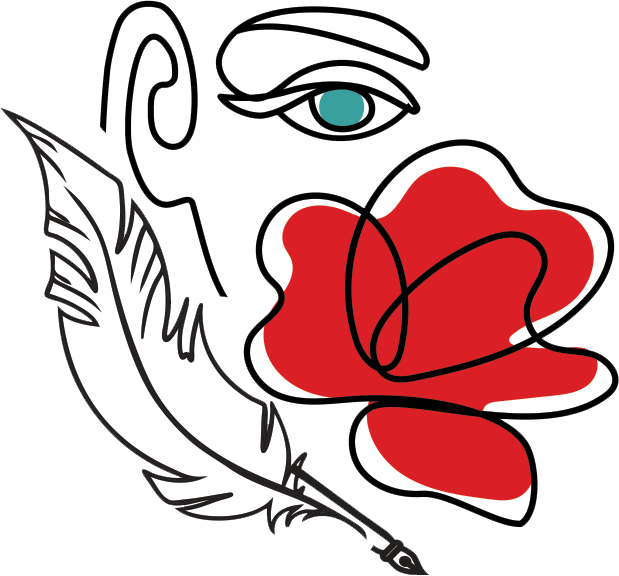How Can I Introduce Myself in English?
A strong self-introduction in English is important to make a good first impression. This guide is here to help you learn how to introduce yourself in English clearly and with confidence. Remember, the first few moments of meeting someone can create a lasting impression.
To introduce yourself well in English, preparation in advance is key. As an English learner, writing a few versions of your introduction and practicing them can make a big difference.
If you find it hard to talk about yourself, especially if you like to listen more than speak, don’t worry. With some simple steps, you can learn how to introduce yourself in English well, even if you’re usually quiet. Let’s look at how to do this, so you can make a strong impact when you meet someone new.
In this guide on self-introductions in English, we’ll cover:
What is a Self-Introduction?
How Can I Start My Self-Introduction in English
Step-by-Step Self-Introduction for English Learners
Grammar Points for Introductions in English
The Secret to Mastering Self-Introductions in English
Understanding Cultural Differences When Introducing Yourself
Presentation Skills in Self-Introductions
Creating a Self-Introduction That is Effective in Any Situation
More Specific Self-Introduction Contexts
How to Write a Self-Introduction in English
Teaching English Just Got Easier!
Save hours of time with an organized collection of high quality, easy-prep ESL lesson plans and worksheets right at your fingertips.
The essential guide to SELF-INTRODUCTIONS IN ENGLISH
What Is A Self-Introduction?
A self-introduction is a personal statement that usually begins a conversation or a presentation. It’s your opportunity to tell someone about yourself, typically including your name, occupation, and a bit of personal background.
For an English learner, learning how to introduce yourself confidently is a valuable skill, essential for networking, professional opportunities, and everyday social interactions. A powerful self-introduction can open doors to new relationships and opportunities.
How Can I Start My Self-Introduction in English?
When beginning your self-introduction, you might naturally start with your name.
However, starting with a ‘thank you’ or expressing excitement is a unique way to begin, and it leaves a more memorable impression.
After this friendly opening, continue your introduction with your name and other relevant details about yourself.
This strategy helps you stand out and demonstrates more confidence when introducing yourself in English.
Step-by-Step Self-Introduction for English Learners
Introducing yourself involves a few structured steps that help you communicate effectively and make a positive impression. Follow these 5 steps to introduce yourself in English clearly and confidently:
1. Greet Your Audience and Show Excitement or Gratitude
A lot of people start their introduction with a greeting and then their name and that’s a perfect way to introduce yourself in some situations. For example, if it’s your first day at work, you might say to a new colleague:
Hello. I’m [name]. I just started today. It’s so nice to meet you!
But imagine that you’re introducing yourself at an event. You could start your introduction with a greeting and then show excitement or gratitude for the opportunity. Starting your introduction on a positive note like this one will have a stronger impact:
Hi everyone! I’m so excited to be here today. The opportunity to join this event and to be a part of this online community is very valuable to me.
If you’re introducing yourself in an interview, you can skip the greeting and start with showing appreciation to your interviewer:
First, I’d like to thank you for taking the time to meet with me today.
2. Share Your Name and Relevant Information About Yourself
What you share about yourself will vary by context. For instance, you might say,
My name is Hannah, and I’m currently based in Vancouver, Canada. Or,
I’m Paulo, originally from Mexico City, but I’ve called Seattle home for three years.
If you’re new to a workplace, mentioning your role is helpful:
I’m Anna, the new graphic designer.
3. Share What You Do or Other Interesting Information About Yourself
Customize this part to the setting. At a professional event, you might discuss your job and experience in your self-introduction:
I’m a project manager with over a decade of experience across various sectors.
In more casual or learning environments, share personal interests or pursuits when you introduce yourself:
I’m an online Spanish teacher focused on helping professionals, and I also love traveling and learning new languages.
4. Mention What You Hope to Contribute or Learn
Align this with your goals and the context of the introduction. If you’re meeting a new client, express how excited you are to help and what you hope to do:
Over the next hour, I would love to learn more about your goals and how I can help you reach them.
If you’re taking an English course, talk about your learning objectives:
I would like to improve my English over the coming months so that I can apply for immigration to Canada.
5. Invite Conversation by Asking a Question
When introducing yourself, you can end your introduction with a question to invite further conversation, such as asking the person about their role or interest in the event. Here are some examples:
What inspired you to come to this event?
What’s the most interesting project you’ve worked on recently?
Have you been to one of these meetups before?
What do you enjoy most about your role in the company?
Do you have any recommendations on places to visit around here?
How did you get started in your field?
Each step in this process builds towards a self-introduction in English that is not only clear and informative but also sets a positive and engaging tone for the conversation that follows.
Steps to Introduce Yourself in English
| Steps | Action | Example |
| STEP 1 | Greet your audience and show excitement or gratitude | Hello everyone! I’m so excited to be here today. |
| STEP 2 | Share your name and relevant information about yourself | My name is Paulo. I’m from Turkey, but I’ve been living in Canada for the past three years. |
| STEP 3 | Share what you do or any other interesting information about yourself | I’m a project manager with over ten years of experience in various industries. |
| STEP 4 | Mention what you’re hoping to contribute or learn | Over the next few hours, I’m hoping to discover new networking opportunities. |
| STEP 5 | Ask a question to invite conversation (if relevant) | What about you all? What brings you here today? |
Grammar Points for Introductions in English
Watch out for these common grammar mistakes when you’re introducing yourself in English:
Mistakes With the Present Perfect and the Simple Past
Both these tenses are used to talk about the past but there is an important difference between them. We use the present perfect to talk about achievements and life experiences:
I have been working here for 10 years.
They have lived here for 5 years.
I have been working as a freelancer for 2 years.
We use the simple past to talk about a finished time period (last year, in 2017, etc.):
I lived in Spain in 2015.
I traveled a lot when I was younger.
I drank a coffee 30 minutes ago.
Learn more about the difference between the present perfect and the simple past.
Avoid This Common Mistake With the Present Continuous
English learners often make this mistake when introducing themselves:
Incorrect: I am living here for 2 years.
In this context, we need to use the present perfect continuous, because the action started in the past and is still in progress:
Correct: I have been living here for 2 years.
We shared an article recently with useful tips on how to avoid mistakes like these and sound more natural in English.
Mistakes When Using Since and For
Use ‘since’ when you start from a specific point in time in the past:
I’ve been with the company since 2015.
I’ve been interested in environmental science since college.
Use ‘for’ when you talk about a duration of time:
I’ve worked in marketing for over five years.
I’ve lived in New York for three years.
Mistakes to Avoid When You’re Introducing Yourself in English
| Common Mistake | Explanation | Example |
| Present Perfect vs. Simple Past | Present perfect: for life experiences without a specified time. Simple past: for finished periods. |
Present perfect: I have worked here for 10 years. Simple past: I lived in Spain in 2015. |
| Present Continuous Error | The present continuous is not used with time expressions indicating duration. Use the present perfect continuous. | Incorrect: I am living here for 2 years. Correct: I have been living here for 2 years. |
| Using 'Since' and 'For' Incorrectly | 'Since' is for specific points in time; 'for' is for durations. | Since: I’ve been with the company since 2015. For: I’ve worked in marketing for over five years. |
The Secret to Mastering Self-Introductions in English
The secret to mastering self-introductions in English, especially for those not native to the language, is consistent practice and a powerful technique: recording yourself.
When you record your own introductions, you gain the unique opportunity to critique and refine your body language, pronunciation, and delivery. This strategy allows you to hear and see yourself as others do. It gives you an understanding that you might miss in real-time conversations.
By watching a recording of your self-introduction, you will notice areas for improvement and you can track your progress. With time, you’ll introduce yourself confidently and easily in English.
Watching and listening to yourself in recordings may feel strange at first because your voice sounds different than what you expect. But over time, you’ll get used to it, and you’ll start to notice the benefits of recording your self-introduction.
By observing your own presentations, you can notice and work on reducing unnecessary words like ‘um’ or ‘so.’ It’s a powerful way to refine your speech clarity, pace, and body language.
As you continue to practice, you’ll become more comfortable, and your introductions will get smoother, helping you to introduce yourself in English with more confidence.
Understanding Cultural Differences in Self-Introductions
When you’re introducing yourself in English, especially in a new place, it's important to understand the local ways of meeting someone new. Here are some cultural differences to keep in mind when you introduce yourself:
Formality vs. Informality: In North America, people often use first names right from the start, and the mood is relaxed. In other places, they might be more formal and use titles and last names until they get to know you better.
Personal Space: In North America, there’s an emphasis on personal space, and this can affect greetings. A firm handshake is standard, but respecting personal space is important. Other cultures might stand closer or greet with a kiss on the cheek.
Small Talk: North Americans typically appreciate a bit of small talk as part of the introduction process. It’s seen as a friendly way to break the ice. However, in some cultures, small talk is not common, and conversations may be more direct and to the point.
Eye Contact: Keeping eye contact shows confidence in North America, but in some cultures, too much eye contact is rude.
Self-Promotion: It’s okay in North America to talk a bit about your achievements when you meet someone. However, in many parts of Asia, humility is more valued, and obvious self-promotion might be inappropriate.
Smiling: In North America, a smile is a friendly gesture that’s often expected when meeting someone. However, in some European cultures, too much smiling can be perceived as a lack of seriousness or even insincerity.
The Role of Time: Being on time is important in North America. In some Latin American and Middle Eastern countries, there’s a more flexible approach to time, and being a little late may not carry the same negative connotation.
Knowing these cultural tips is useful for English learners who want to make a good impression wherever they go. By paying attention to these details, you can make sure your self-introduction is polite and leaves a good mark.
Presentation Skills for Self-Introductions in English
The way you present yourself is just as important as the words you choose when introducing yourself in English. Here are some presentation skills to consider that can refine your self-introduction:
Reduce Use of Filler Words: Avoid using words such as ‘um,’ ‘ah,’ or ‘like.’ These can make you seem less confident and can distract from your message.
Speak Slowly and Clearly: A slower pace can help you pronounce your words more clearly and appear more composed. It gives you time to think about your next words.
Eye Contact: Making eye contact with your audience shows that you are engaged and confident.
Keep It Brief: Offer the important details without adding unnecessary information.
Self-Introduction That Are Effective in Any Situation
Mastering the art of self-introductions in English is less about natural talent and more about understanding your audience. You might think people who introduce themselves effectively are just born with the skill, but in truth, they’ve worked on it. For English learners, it’s essential to adapt your self-introduction to the context.
An effective introduction is one that’s customized to the situation—formal or informal. While you can say “Hello! How are you?” in a casual meet-up, a more formal greeting is suitable in a professional environment. Recognizing the difference is key to making a good impression.
In the sections that follow, we’ll explore examples and strategies for introducing yourself in English in various situations. Whether you’re at a social event, a job interview, or meeting new colleagues, we’ll help you create an introduction that captures attention and feels just right for the occasion. Continue reading to learn the essentials of a memorable self-introduction in English for non-native speakers.
What are Some Good Self-Introduction Examples?
Here are short self-introduction examples for three different settings, following the five steps we mentioned earlier:
Casual Context Introduction: “Hello everyone! I’m thrilled to join this community garden! My name is Luca, and I’m a chef from Rome, Italy. I’ve just moved to the neighborhood and can’t wait to combine traditional Italian cooking with our local tastes. Looking forward to growing fresh herbs and sharing them with you all!”
Job Interview Introduction: “Good morning, thank you for considering me for this role. I’m Camila, a graphic designer from São Paulo, Brazil. My specialty is in creating visual stories that speak to audiences globally. I’d love to apply my creative skills to your company’s innovative projects.”
New Workplace Introduction: “Hi team! I’m absolutely thrilled to start my journey with you as the new sales representative. My name is Sofia, coming all the way from Madrid, Spain. With six years of experience across different European markets, I’m eager to dive into our market and contribute to our shared success. Excited to learn and grow with you all!”
More Specific Introduction Contexts
When introducing yourself in English, the details matter. Not every introduction fits every occasion. Each context demands a unique approach and specific information. In this section, we explore specific situations in detail and give you examples to help you refine your self-introductions to fit the context perfectly. Whether you’re at a casual get-together or starting a new professional role, we’ve got the advice to help you introduce yourself in English with confidence and clarity.
How to Introduce Yourself in a Class
So you’re in a class with other students and your teacher asks you to introduce yourself in English.
Self-introductions in a class are meant to be brief and conversational. You don’t need to provide a detailed account of your life. Keep this checklist in mind:
Open with a warm greeting that conveys your excitement about joining the class.
Present your name, and if there’s a nickname you prefer, let your classmates know.
Tell them where you’re from, which can include a memorable detail about your hometown or current city.
Offer a brief insight into what interests you or what you enjoy doing in your free time.
Conclude by expressing your enthusiasm for the class and your intention for joining.
With the steps in mind, here’s how you can introduce yourself:
“Hey everyone! First, I want to say that I’m excited to be part of this class. My name is Matt. I’m from Italy originally but I grew up in Argentina. I speak Italian, Spanish and English. I love gaming, and I stream on Twitch almost every day. I’ve always wanted to improve my English so now that I have the time, I’ve finally signed up for classes online.”
Here’s another example:
“Hello all and I’m really happy to meet you all. My name’s Lucia and I’m from Spain. I was born in the south of Spain but I live in Barcelona. I work as a translator, and I don’t have much time for hobbies these days. But in the future, I’d like to try yoga. I’m taking this class because I want to improve my speaking in English.”
How to Introduce Yourself as an ESL Teacher in a Class
Starting off on the right foot as an ESL teacher means creating a warm and welcoming atmosphere from the get-go. Here’s how you can introduce yourself in a way that’s both engaging and professional:
Start with Humor: Greet your class with a smile and a light-hearted comment about the day or a relatable observation. This sets a pleasant tone and shows you’re approachable.
Share Fun Facts: Include some intriguing tidbits about yourself. Maybe you have a pet with a funny habit, or you’ve been to a place that’s considered unusual. These personal details make you memorable and relatable.
Common Ground Connections: If you’re teaching young children, mentioning something as simple as your favorite ice cream flavor can spark an instant connection. For older students, mentioning that you binge-watched the latest popular series can bridge gaps quickly.
Discuss Class Goals: Be clear about what you aim to achieve with your class. Whether it’s improving conversational skills or mastering the art of writing, let them know what journey you’re excited to lead them on.
Encourage Questions: Invite your students to ask questions about you. This not only engages them but also allows you to address their curiosity and foster a sense of community.
Example 1: Introducing Yourself to Young Learners
“Good morning, everyone! I’m Mr. Lee, and just like many of you, I can’t start my day without a big bowl of chocolate chip ice cream. I’m here to help us become fantastic English speakers and have fun along the way. So, what’s your favorite ice cream?”
Example 2: Introducing Yourself to Teenagers or Adults
“Hello, class! I’m Ms. Thompson, and when I’m not teaching English, I’m at home watching ‘Stranger Things’. Can’t wait for the next season! I’m looking forward to helping us all dive into the English language. Now, who else loves ‘Stranger Things’, and what other shows should I add to my list?”
How to Introduce Yourself in an Interview as an ESL Teacher
When you’re introducing yourself in an interview as an ESL teacher, it’s important to keep it short and relevant. Avoid sharing too many personal details and focus on your professional background and teaching philosophy. You can also add a personal touch to connect with the interviewer. Here’s a step-by-step breakdown of how to introduce yourself as a teacher followed by an example:
STEP 1: Greet and Express Enthusiasm: Start with a greeting and show your enthusiasm for the opportunity to interview.
STEP 2: Name and Teaching Background: State your name and briefly outline your teaching background, focusing on what’s relevant to the ESL context.
STEP 3: Educational Philosophy: Share your teaching philosophy or approach, focusing on elements that align with the institution’s values or the needs of the students.
STEP 4: Personal Teaching Successes: Mention one or two personal successes or experiences that illustrate your effectiveness as an ESL teacher.
STEP 5: Connection to the School or Position: Express your interest in the specific school or position, showing that you’ve done your research and understand what they’re looking for.
Here’s how it can look:
“Hello, thank you for having me. I’m Ana García. I’ve been teaching Business English to grown-ups for eight years, mostly in Spain and Brazil. I love helping people use English in their work, especially when they have to talk to people from other countries. I once created a special English course for a company in São Paulo, and it really helped them with their business presentations and meetings. I like the way your school teaches adults, and I hope to share what I know and help out here.”
How to Introduce Yourself in an IELTS Exam
Start your IELTS speaking test with a great self-introduction. This is your moment to shine and show how well you can speak English. We’ll give you tips to introduce yourself in a way that’s simple but effective.
STEP 1: Begin with a greeting and enthusiasm: You could say, “Good morning! It’s great to be here.”
STEP 2: Give your full name.
STEP 3: Mention where you’re from and where you’re living now: “I’m from [Your Country/City] but I’ve been living in [Your City] for...”
STEP 4: Briefly talk about your English language journey or goals: “I’ve been studying English for [number of years] to achieve [your goal].”
STEP 5: Let them know you’re happy to take the test: You might say, “I’m really looking forward to demonstrating my English skills today.”
CLOSING: End with something like, “Thank you for this opportunity; I can’t wait to get started!”
Here’s an example of a self-introduction in an IELTS exam:
“Good morning! It’s a pleasure to meet you. My name is Carla Fernández. I’m from Seville, but I’ve been living in Madrid for four years. I’m here to take the IELTS exam because I plan to study international business in Canada next year. I’m excited about this opportunity to improve my English and achieve my academic goals.”
How to Introduce Yourself in an Interview
When you’re at a job interview and asked to introduce yourself, it’s important to keep the focus on your professional experience and qualifications.
You should customize your self-introduction to focus on the aspects of your background that are most relevant to the position.
Here’s a short guide on introducing yourself in an interview:
Start with a polite thank you to the interviewer for the opportunity.
Continue with sharing your current role or most recent position and your professional background.
Focus on your skills and experiences that are relevant to the job you’re applying for.
Share your strengths and how they make you a suitable candidate for the role.
Conclude with a statement expressing your enthusiasm for the position and the chance to learn more about it.
Example of Introducing Yourself in a Job Interview
“Thank you for taking the time to meet with me today. It’s nice to finally meet you in person. I’m Alex Ramirez. I work with email marketing and social media at my current job. I have over five years of experience, and I like to use data to improve my work. I’m excited about the chance to use my skills at your company, especially to help with your digital marketing goals. I look forward to learning more about the job.”
Check out our article 10 Tough Interview Questions and How to Answer Them in English to learn how to answer interview questions effectively in English.
How to Introduce Yourself on the First Day of Work
Introducing yourself on the first day of work sets the stage for your professional relationships. Here’s a quick guide and an example to help you make a positive impression:
Smile and offer a friendly greeting.
Share your name and your new role.
Briefly mention your background.
Express your enthusiasm for joining the team.
Be open to conversations and questions.
Example of Introducing Yourself on the First Day of Work
“Hello everyone, I’m Sara Hussein, your new IT specialist. I come with a strong background in tech startups, and I’m thrilled to join this dynamic team. I’m keen to apply my skills here and learn from all of you. Please feel free to share any insights or suggestions that might help me get up to speed. I’m very much looking forward to working together!”
This short and sweet introduction covers all the basics while inviting engagement from your new colleagues.
How to Introduce Yourself in Meetings
Introducing yourself in a meeting is a chance to tell your new team who you are and what you do. Here is a simple way to do it:
First, start with a polite greeting and a thank you. You could say, “Hello, everyone, thank you for having me here today.” This is polite and shows you are happy to be there.
Then, tell them your name and job. For example, “My name is Rajesh Kumar, and I am the new project manager.”
Next, explain a little about your work, especially if it connects to what others do. You might say, “I will manage our mobile app projects and work with the marketing and technology teams.”
Keep your introduction short, so it does not take too much time. Finish by saying something positive about working together, like, “I am excited to work with all of you and help our team succeed.”
This way, you tell people about yourself and your role clearly and quickly, which is a good way to introduce yourself in English during meetings.
Example of Introducing Yourself in a Meeting
“Good morning, everyone. Thank you for the warm reception. I’m Raj Patel, stepping in as your new Sales Manager. My focus will be on boosting our sales strategies and fostering client relationships. I’m eager to collaborate and drive success for our team. It’s great to be here and I can’t wait to work closely with each of you.”
How to Introduce Yourself Before Starting a Presentation
When introducing yourself in a presentation, it’s important to include certain elements to help people expect what’s to come. Here’s a short description of what to include:
Greeting: Start with a brief, polite greeting to acknowledge your audience and establish a connection.
Name and Affiliation: Clearly state your name and your professional or academic affiliation, which provides context to your authority or perspective on the presentation topic.
Purpose of the Presentation: Briefly outline the main purpose of your talk. This helps the audience understand the importance of the presentation and what they can expect to learn.
Overview of Content: Provide a snapshot of the key points or sections you will cover. This gives your audience a roadmap of your presentation’s structure.
Engagement Invitation: Encourage audience participation or indicate how you’d like them to engage with your presentation (e.g., holding questions until the end or inviting them to ask questions as they arise).
Acknowledgments: If relevant, thank your audience for the opportunity to present and any organizations or individuals who have contributed to your work or presentation.
Including these elements ensures clarity, sets expectations, and helps engage your audience from the very beginning of your presentation.
Example of Introducing Yourself in a Presentation
“Good morning, and thank you all for joining me today. My name is Hana Jung and today, I’ll talk about new solar panels for homes. We will look at how they work, their benefits, and why they are good for cities. I welcome your questions and comments, and I’d be grateful if we could save them for the Q&A session at the end. Before we get started, I’d like to express my appreciation to the GreenTech Conference organizers for inviting me, and to my team back in Seoul for their continuous support.”
How to Introduce Yourself in a Creative Way
A creative self-introduction can make you memorable. Here’s a brief guide on how to introduce yourself creatively:
Start with a spark: Open with something that grabs attention. A surprising fact or a humorous one-liner can set the tone for a creative introduction.
Use storytelling: A short, engaging story that illustrates who you are can be more compelling than just facts.
Connect the dots: Link your interests and experiences to the context of your introduction. This shows relevance and thoughtfulness.
Finish with an invitation: End by encouraging others to engage with you. A question or an intriguing statement can open the door to conversation.
For example, if you’re creating a self-introduction for an online bio, you could say:
“Hi, I’m Maya. My journey has taken me from mountain highs to the heart of tech startups, where every website I create tells a story. What’s your story? I’d love to help share it with the world.”
How to Introduce Yourself in an Informal Way
When introducing yourself in an informal context, you can use a relaxed and personal approach. Here’s how you can keep your introduction friendly and casual:
Start with a simple hello or hi, followed by your name. “Hey there, I’m Alex!”
Share something personal but not too private. For instance, mention a hobby, like, “I’m a big fan of jazz music,” or a personal interest, “I love hiking on the weekends.”
Use a conversational tone and ask a question to invite interaction. “How about you? What do you like to do for fun?”
Here’s a short example of how you might introduce yourself informally:
“Hi, I'm Alex! I’ve got a passion for painting and can’t resist a good cup of coffee. What kind of things are you into?”
How to Write a Self-Introduction in English
When it comes to writing a self-introduction in English, the tone tends to be more formal than in spoken introductions. Whether you’re composing an email, a cover letter, or an introductory message on a professional network, here are some key points to keep in mind:
Begin with a Greeting: Start with a polite salutation like “Dear [Name],” if you know the recipient’s name, or “Dear Hiring Manager,” if you don’t.
State Your Purpose: Clearly mention why you are writing. If it’s for a job application, express your interest in the position and the company.
Avoid Slang and Contractions: To maintain a formal tone, steer clear of informal language and contractions (e.g., use “I am” instead of “I’m”).
Provide Relevant Details: Share information about your professional background, skills, and achievements. Tailor this to your audience and the context of your introduction.
Show Enthusiasm: Convey a genuine interest and enthusiasm for the opportunity or the connection you’re trying to make.
Close Politely: End your introduction with a courteous sign-off, such as “Sincerely” or “Best regards,” followed by your full name.
In the next sections, we’ll dive into specific scenarios where self-introductions play a crucial role, such as professional networks, emails, and cover letters.
A Short Introductory Message on a Professional Network
When you introduce yourself on a professional site like LinkedIn, it’s good to keep it short and clear. Start with a friendly ‘hello’ and then talk about your job. Say what you do and something you are proud of in your work. Also, tell what you hope to find on this network, like advice or new ideas. Finish by saying you are open to talking and sharing thoughts.
Example of a Self-Introduction on LinkedIn
“Dear Mr. Thompson,
I am Alex Martinez, a marketing specialist with a passion for digital innovation and brand strategy. I’ve followed your insightful posts on marketing trends and I’m impressed by your impactful strategies at Thompson Marketing Inc. As someone who is dedicated to continuous learning in the field, I’d be grateful to connect with you and share insights.
Warm regards,
Alex Martinez”
How to Introduce Yourself in an Email:
Writing a self-introduction email requires a balance between professionalism and a touch of personal warmth. It’s important to establish your role and how you fit into the team or company structure. Here’s how to go about it:
Begin with a polite greeting tailored to the time of day or week.
Clearly state your name and your new position.
Briefly explain the purpose of your email.
Mention your immediate team or supervisor if relevant.
End with an offer to provide further information and an expression of your enthusiasm to work with the recipient.
Example of Introducing Yourself in a Work Email:
Subject: Introduction - Alex Martin, Your New Marketing Coordinator
Hello Team,
Good [morning/afternoon],
My name is Alex Martin, the new Marketing Coordinator working under Jasmine Lee, the Marketing Director. I am thrilled to be part of the company and am looking forward to contributing to our projects and goals.
I come with a background in digital advertising and a keen interest in developing innovative marketing strategies. I’ll be reaching out to each of you soon to learn more about our ongoing efforts and to see how I can best support the team.
Please feel free to contact me for any collaboration or if there’s anything you would like to discuss. I’m excited to start this journey with you all!
Warm regards,
Alex Martin
By keeping your self-introduction concise yet inviting, you create an opportunity for your new colleagues to engage and start building a professional relationship right from your first email.
How to Introduce Yourself in a Cover Letter:
When you’re writing a cover letter, the introduction is your first chance to make an impression. The goal is to briefly present yourself, highlight your interest in the position, and show why you’re a great fit. Here’s a simple way to do it:
Start with a respectful salutation and the hiring manager’s name if you have it.
Mention the job title you’re applying for.
State how you learned about the job opening.
Give a concise overview of your professional background.
Explain why you’re excited about the opportunity and how you align with the company’s values or mission.
Example of Introducing Yourself in a Cover Letter:
Dear Hiring Manager,
I am writing to express my interest in the Graphic Designer position at Creative Studios, as advertised on LinkedIn. With a Bachelor’s degree in Visual Arts and three years of experience in a busy marketing agency, I have developed a strong skill set in design that perfectly aligns with the needs of your team.
Your commitment to innovative design inspires me, and I am enthusiastic about the opportunity to contribute to your company’s success. My previous role involved collaborating on projects that won industry awards, and I am eager to bring my creativity and dedication to Creative Studios.
Thank you for considering my application. I am looking forward to the possibility of discussing how my skills and ideas can benefit your team.
Best regards,
Jamie Smith
Keeping your cover letter introduction clear and direct helps the hiring manager understand who you are and why you’re the right person for the job, setting the stage for the rest of your letter.
Final thoughts on Self-Introductions in English
Introductions will always be awkward if you don’t know what to say. In short, don’t get caught unprepared! So make sure you take the time to write down some introduction samples in English for different scenarios and practice them until you master them.
I hope that today’s tips have helped you! If you have any questions, please share them with us in the comments.
About the Writer
Sama is the founder of In English With Love and an online English educator from Canada. Her mission is to make quality English learning materials accessible to English learners and teachers everywhere.

















